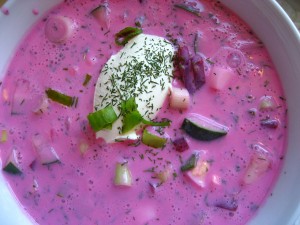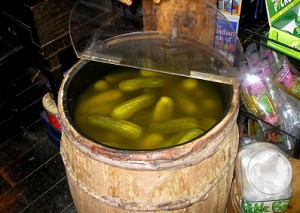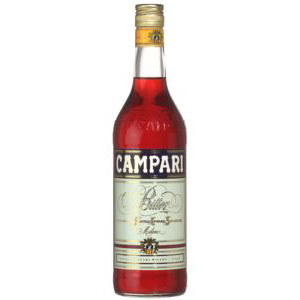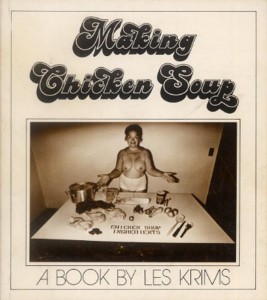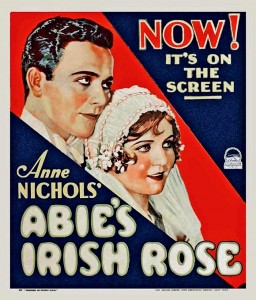You will never find a cucumber, cooked, fresh or pickled, on an Italian menu. For some strange reason, Italians believe cucumbers have a near lethal effect on the digestive system. Oh, well, that only means more cucumbers for the rest of us. Cucumbers make a very superior cold soup, perfect for summer. Cucumber slices with lemon juice and dill are perfect with many German and Scandinavian dishes. Chopped cucumber (and radish) should always be added to cold beet borscht or cold sorrel soup (schav). Chopped cucumber, radish, scallions, lemon juice are added to Greek yogurt in order to make the Indian salad, Raita, which can cool down a blazing vindaloo curry. Cucumber slices with sour cream (or yogurt) and lots of dill is a happy companion of cold poached salmon. These are a few of the good things HG does with fresh cucumbers. But, it is when art is applied to cucumbers, the vegetable becomes a pickle, and few things in life are better than a good pickle. Sour (and half sour) Jewish pickles with their inimitable dill and garlic taste, are the necessary accompaniment to pastrami, corned beef, chopped liver and a host of other kosher (or kosher style) delicacies. French cornichons are a delight to consume with country pates, saucisson and other masterpieces of French charcuterie. Slightly sweet “bread and butter” pickles (the Bubbie’s brand is the best) are nice with sandwiches. In HG’s Bronx youth, the hungry lad evinced a passion for pickles. HG bought them straight from the barrel at the “appetizing” stores that were a fixture in all Jewish neighborhoods. HG never ate popcorn at the movies. Instead, HG munched a pair of sour pickles. Tasty. Healthy (low in calories). Cheap. They cost a nickel in HG’s youth.
Cukes
October 13th, 2015 § 0 comments § permalink
The Great Improvers
July 4th, 2013 § 0 comments § permalink
At the urging (very vigorous urging) of BSK, obedient HG has given up vodka as a pre-dinner cocktail. A sobering move. Instead, creative HG fills a wine glass with ice. In goes some cheap, indifferent white wine plus some Campari and generous squeezes of lime. A refreshing, lightly alcoholic drink. Perfect for summer. While sipping, HG thought how Campari is one of the Great Improvers — it enlivens sparkling water, tonic water and, when living dangerously, it can make even the most pedestrian vodka sing; an even better pairing is vodka, Campari, sweet vermouth, dry vermouth and lots of ice. Strained into a chilled martini glass — delicious. Other members of the Great Improvers Club are Sriracha, Parmesan cheese and sour cream (or Greek yogurt). Few things are not made better by a judicious squirt of tongue tingling sriracha. It first made its appearance on the tables of Vietnamese restaurants in the United States. Now,it can be found in every supermarket and in every professional kichen — a Sriracha flavored Dorito chip cannot be far behind. Parmesan is the savior of indifferent Italian cooking (and salad making). Sour cream and/or thick Greek yogurt rescues many Jewish/Russian/Eastern European dishes. Borscht, schav (chilled sorrel soup) and pelmeny (Siberian ravioli) should always be served with abundant dollops of sour cream. Karnezelach (beef-onion-garlic-parsley burgers formed into fat cigar shapes and pan broiled) are attractive with Greek yogurt enhanced by garlic, olive oil and some sliced radish. Latkes (potato pancakes) become poetic with good sour cream. As for blintzes, pierogi, etc. All are simply excuses to eat lots of sour cream.
Mom’s Soups
February 10th, 2013 § 1 comment § permalink
As HG luxuriates in front of a crackling fire at his New Mexico home watching news reports of three foot snow drifts battering the East Coast, HG notices a funny sensation. A nostalgic hunger for the soups HG’s Mom fed the family. They warmed HG and family in the winter and cooled them in the summer. Winter-time soups were either kapustah or potato soup. Kapustah, as HG recollects it, was a cabbage, onion, tomato, garlic melange in a beef broth enlivened with chunks of boiled beef. This was topped with a big ladle full of sour cream plus some fiery, freshly grated horseradish. With a few slices of Stuhmer’s (or Pechter’s) pumpernickel (with the savory spread of chicken fat and coarse salt) this was a solid, filling, cold weather dinner. The potato soup was simple. Just boiled potatoes and onions in a rich beef stock. A lunch dish. Warm weather soups were beet borscht and schav, both served cold. Mom’s borscht was incomparable. She used something she called “sour salt” to balance the sugary earthiness of the beets, giving the soup a distinctive sweet-tart taste. It received the usual topping of sour cream plus a healthy shower of chopped scallions and radishes. It was accompanied by a hot, buttered boiled potato. Schav was a sorrel soup, mouth puckeringly sour. Unlike the English Sorrel soup, the sorrel in Schav is not pureed but left in its leafy state. This soup was served icy cold (sometimes ice cubes were added to the bowl). Sour cream, naturally, and the obligatory boiled potato. During those non-air conditioned years of yesteryear, schav was a lifesaver on a blazing New York summer day.
Rockaway Cuisine
September 12th, 2012 § 0 comments § permalink
Following yesterday’s posting, Hungry Gerald followers have expressed curiosity about the cuisine in the tiny, cramped, non-air conditioned Rockaway rooming house occupied by HG’s family during the steamy summers of the Great Depression. Sour cream (smetenya, HG’s Mom called it, harking back to her Belorussian roots), was the basic foodstuff. Big spoonfuls were mixed into Mom’s cold and flavorful beet borscht and sorrel soup (schav). Main dish at many dinners was simply a bowl of boiled potatoes with sour cream. The family also ate bowls of sour cream with chopped radishes, scallions and cucumbers. Sour cream adorned Mom’s blintzes (crepes stuffed with pot cheese or peppery mashed potatoes). Sour cream was served with kasha varneshkes (buckwheat groats and butterfly pasta). Best of all were bowls of strawberries, raspberries, blueberries and blackberries adorned with sour cream. Meat didn’t play a big role in the Rockaway diet (except for salami and eggs in a pancake style). Lots of fried flounder. Mom dipped the fish in beaten egg and rolled them in bread crumbs before popping them into an pan of sizzling Crisco. This was served with Mueller’s Spaghetti and Mom’s very rudimentary tomato sauce (HG loved it). Tuna and sardine salads were basics. A truck manned by a Long Island farmer pulled up on the Rockaway block daily loaded with fresh tomatoes, lettuce and seasonal vegetables. Fortunately, he always had a load of just picked corn and HG managed to eat a ton of it dripping with butter. The drink was always beer fetched at the beginning of dinner from Reidy’s Saloon on the corner (in later years, HG had an Abie’s Irish Rose romance with the proprietor’s lovely daughter). Yes, HG (at the age of six) drank beer with his elders. It was considered a healthy drink unlike the sugary sodas that were not allowed on the HG table. HG had a joyous errand at the end of dinner. It was his job to get a quart of ice cream (35 cents) at Barney’s Ice Cream Parlor. This was hand churned deliciousness that Barney scooped into a container. HG had to race back home with the ice cream before it melted. Anticipation gave the little fellow winged feet.
The Ice Pick Cometh
September 11th, 2012 § 1 comment § permalink
When HG was a little lad during the Great Depression, the HG family of four (and sometimes five) spent summers in a Rockaway Beach boarding house. Two rooms (a kitchen/”dinette” and bedroom connected by a foyer. Mom and Pop slept in the bedroom. Sister slept in the foyer. HG slept on the kitchen floor. When brother occasionally joined the family, the kitchen table was shoved to a side and he joined HG on the kitchen floor. The rudimentary sleeping pads were rolled up in the morning and stored under the parental bed. Toilet was in the hall outside the apartment and was shared with another family. The arrangement encouraged alertness. Showers were in the basement of the boarding house and the water had two temperatures — cold and very cold. The summer season began July 1 and ended the day after Labor Day. Rent: $25 for the season. Did HG (or any of the other family members) feel deprived because of the crowding and primitive facilities? No. It was heaven. Life was lived (during the day) on the beach and in the sea and (at night) on the boardwalk cooled by salt air breezes. HG’s father commuted to the hot city and (rain or shine) upon his return spent an hour being refreshed in the Rockaway surf. The kitchen had no refrigerator. It had an ice box (serviced by a muscular Italian ice man named Vito). There was a basin beneath the ice box to contain the melting ice and it was little HG’s responsibility to make sure the basin was emptied before it could overflow. HG was dedicated to that task. As a reward, HG could use the ice pick to chip a bit of ice for a cooling treat. HG’s Mom would often chip some chunks of ice to put in her bowls of pink, cold beet borscht (best cold summer soup in HG’s long culinary experience). The ice pick got a lot of use. During that same time period ice picks were being used for lethal purposes by the Murder, Inc. killers from Brooklyn’s Brownsville neighborhoods. The renowned Jewish assassin, “Pittsburgh Phil” Strauss, would plunge an ice pick into his victim’s ear or temple. He was so deft that many medical examiners assumed the victim died of a cerebral haemorrhage. According to a recent New York Times story, the ice pick (after a decades long absence) has reemerged as a an anti-social utensil. It is now a weapon of choice for many Bronx street gangs. Obviously, these thugs have an affection for retro artifacts.
The Dairy Restaurant. Hot Weather Refuge.
July 3rd, 2011 § 0 comments § permalink
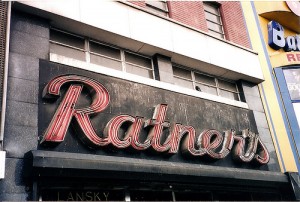 Thoughts of ice cold borscht and steamy New York weather make HG recall those refuges from the heat: Dairy restaurants. Dairy restaurants obeyed Jewish dietary laws and served only “dairy” and “pavre” food.
Thoughts of ice cold borscht and steamy New York weather make HG recall those refuges from the heat: Dairy restaurants. Dairy restaurants obeyed Jewish dietary laws and served only “dairy” and “pavre” food.
They served borscht (beet soup), schav (sorrel soup), blintzes (rolled crepes stuffed with cheese or potato) , kasha varnishkes (buckwheat groats with butterfly shaped pasta), potato pirogen (boiled potato and onion dumplings) and more. Big bowls of excellent bread, bialys, onion rolls — also called “pletzels” and copious amounts of butter. Big bowls of thick sour cream were there on the table to accompany every dish. There was fish (considered “parve” a.k.a. neutral meaning neither meat nor dairy) including many varieties of herring; tuna and sardine salads; gefilte fish with strong horse radish.
No meat. Emphatically no meat. Forbidden. A kosher enterprise could not serve both meat and dairy products.
Every Manhattan neighborhood had a Dairy restaurant (okay, not the Upper East Side). The Paradise and Steinberg’s were popular on the West Side. Ratner’s and Rappaport’s ruled the Lower East Side. Scores more in The Bronx and Brooklyn. All gone. Assimilation or changing tastes?
SJ reports only one traditional “Dairy” remains: B&H on Second Avenue. Long may it cool fevered brows and clog arteries.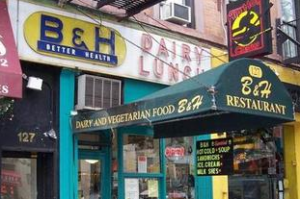
Soup. Soup. Beautiful Cold Soup.
July 1st, 2011 § 0 comments § permalink
 A bowl of ice cold, flavorful soup on a hot summer day. Nothing can be better. HG has enjoyed gazpacho, cucumber soup, carrot soup — all frigid treats. HG remembers with fondness his mother’s sweet, sour and bright red beet borscht. Served cold, it softened to pink when tablespoons of thick sour cream were stirred into it. HG’s mom also made mouth puckering Schav, a sorrel soup which was always accompanied by a hot boiled potato. HG was never fond of French Vichyssoise. Too much sweet cream. Stultifying rather than refreshing.
A bowl of ice cold, flavorful soup on a hot summer day. Nothing can be better. HG has enjoyed gazpacho, cucumber soup, carrot soup — all frigid treats. HG remembers with fondness his mother’s sweet, sour and bright red beet borscht. Served cold, it softened to pink when tablespoons of thick sour cream were stirred into it. HG’s mom also made mouth puckering Schav, a sorrel soup which was always accompanied by a hot boiled potato. HG was never fond of French Vichyssoise. Too much sweet cream. Stultifying rather than refreshing.
This week HG has been experiencing (as New Mexico battles horrible forest fires) the ultimate cold soup — nourishing and soulful. The soup was prepared by HG’s Santa Fe friend, Vicki Buckingham, a vegetarian who does exquisite things with the products of the earth. Vicki claims her soup has a Polish origin and HG can discern some East European elements in it. Here’s the recipe for what HG call’s “Vicki’s Miracle Heat Beater”: Using a blender or food processor, blend five small tomatoes with a tablespoon of vinegar (cider or rice) plus salt and pepper. When smooth add the pureed tomatoes to a quart of buttermilk and chill in the refrigerator. Serve with bowls of four cooked medium beets (cut into slivers); six finely chopped scallions; a cubed and seeded cucumber; chopped hard boiled eggs; lots of chopped dill. Diners add these ingredients to suit their taste. (HG likes to top it off with a dash of cayenne pepper).
 When not making soup, Vicki is a practitioner of the Feldenkrais Method. The Method increases a person’s range of movement and flexibility (among other positive results). Vicki worked her Feldenkrais magic on BSK and BSK swears by it. You can learn more about Vicki and Feldenkrais (and soup): victoriabuckingham@gmail.com.
When not making soup, Vicki is a practitioner of the Feldenkrais Method. The Method increases a person’s range of movement and flexibility (among other positive results). Vicki worked her Feldenkrais magic on BSK and BSK swears by it. You can learn more about Vicki and Feldenkrais (and soup): victoriabuckingham@gmail.com.